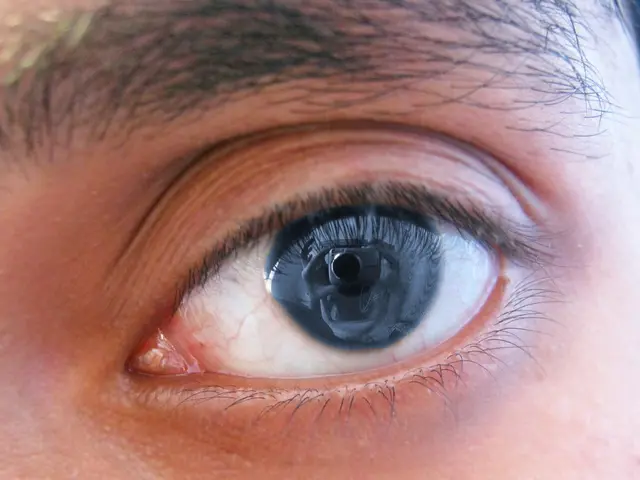The Reason Behind Hiccups in Humans and Other Animals: Unraveling the Purpose of these Inconvenient, Audible Gulps
Hiccups, a common and often irritating reflex, may seem like an oddity in adulthood, but they hold significant historical and developmental significance. Recent research suggests that hiccups might be an evolutionary relic, tracing back to our aquatic or amphibious ancestors.
Adult hiccups are typically triggered by eating too quickly, drinking carbonated beverages, sudden changes in temperature, emotional stress or excitement. However, in infants, hiccups serve a more purposeful role. They help newborn mammals expel excess air from their stomachs while feeding, acting as a built-in burping reflex. This reflex may also aid in the maturation of the brainstem circuits involved in respiratory control, ensuring that these neural pathways are robust before the infant becomes fully dependent on lung-based breathing.
From a developmental perspective, hiccups are especially common in fetuses and infants. In fetuses, hiccups can be observed during both quiet and active sleep states, and their occurrence rises late in gestation—suggesting they may play a role in practicing and regulating breathing after birth. For infants, the hiccup reflex might serve two beneficial functions: strengthening and coordinating the breathing muscles, particularly the diaphragm, and aiding in the maturation of the brainstem circuits involved in respiratory control.
While the purpose of hiccups in adults remains unclear, they are potentially useful in newborns, acting as a form of sensorimotor learning, helping wire the brain for complex tasks like speaking, breathing rhythmically, and even swallowing properly. However, hiccups can be a sign of something serious if they persist for over 48 hours (chronic hiccups). Chronic hiccups have been linked to various conditions such as gastroesophageal reflux disease (GERD), stroke or brain injury affecting the brainstem, multiple sclerosis, certain cancers, adverse drug reactions, and even President John F. Kennedy's chronic hiccups were due to a back injury that irritated his phrenic nerve.
In extreme cases of chronic hiccups, doctors may prescribe medications like baclofen, gabapentin, or chlorpromazine. There are also a few techniques that might work to stop hiccups, such as stimulating the vagus nerve, interrupting the hiccup cycle, and resetting your diaphragm.
Despite being almost entirely beyond conscious control in adults, hiccups remain a fascinating physiological oddity, one part evolutionary leftover, one part developmental tool, and one part medical mystery. They are a reflex from our watery past that still echoes in the modern human body, remnants of a time when air and water danced together in lungs and gills, and survival meant adapting fast or dying out. Hiccups, in their strange consistency across mammals, are whispers from history, echoes of a time long past, yet still resonating within us today.
- The field of environmental science might find intrigue in the history of hiccups, as they could offer insights into our aquatic or amphibious ancestors.
- Personal-finance advice often stresses the importance of controlling one's health-and-wellness, including dealing with conditions like hiccups efficiently to avoid disruptions.
- In fitness-and-exercise routines, the diaphragm, a muscle affected by hiccups, plays a crucial role in breath control, making understanding hiccups beneficial.
- The lifestyle section of a magazine might delve into home remedies for stopping hiccups, providing readers with practical tips for daily life.
- Investing in businesses that focus on health-and-wellness, such as developing medications for chronic hiccups, could be a lucrative opportunity in the investment world.
- General-news outlets may occasionally report on people who have suffered from chronic hiccups, linking their conditions to medical-conditions like GERD or stroke.
- Education-and-self-development platforms could offer courses on the human body, using hiccups as a relatable case study to teach the intricacies of the respiratory system.
- Space-and-astronomy enthusiasts might find the evolutionary history of hiccups fascinating, as it ties into the origins and adaptations of life on Earth.
- Food-and-drink establishments could leverage their understanding of hiccup triggers to create more hiccup-friendly environments for their customers, enhancing their overall dining experience.




